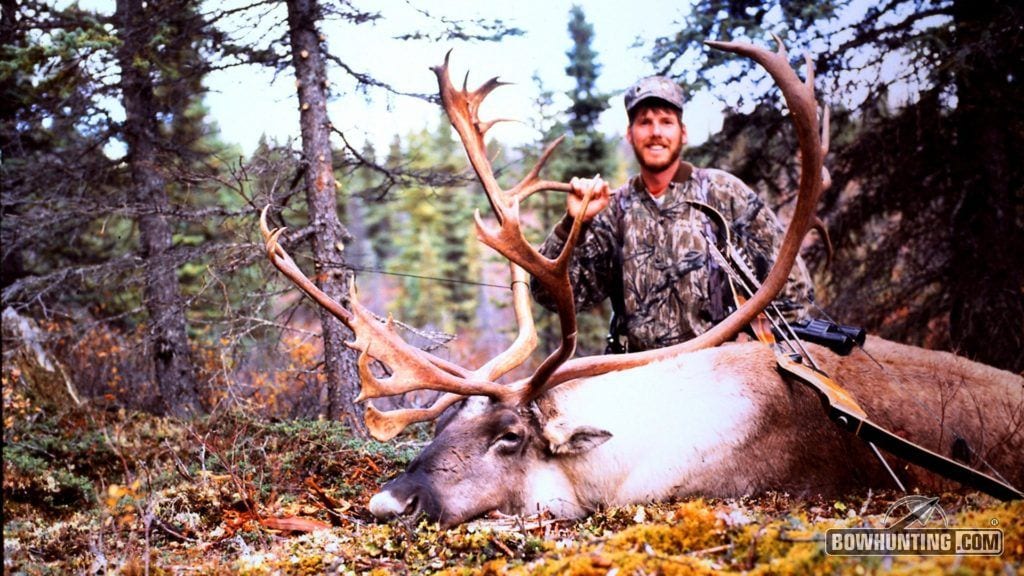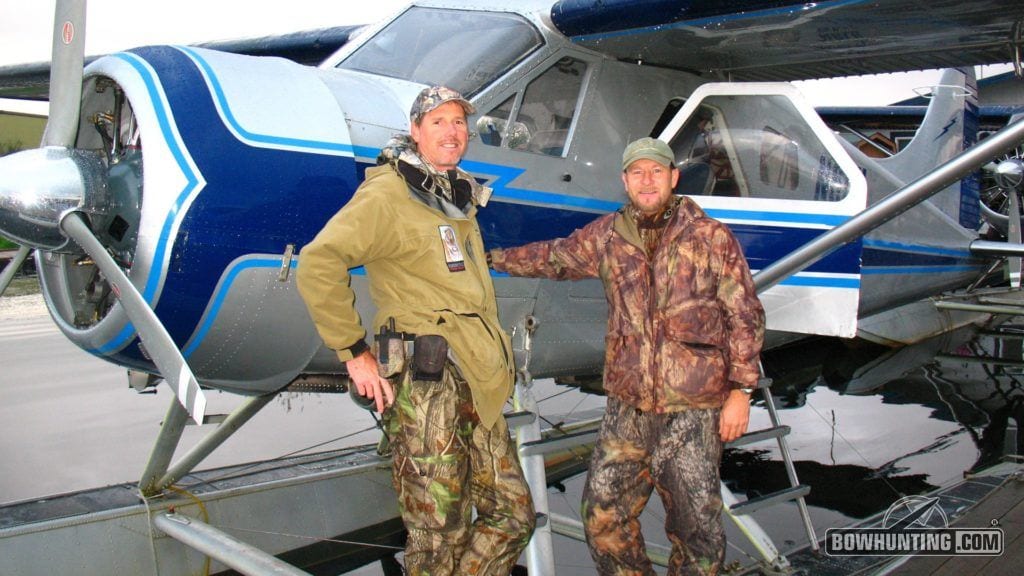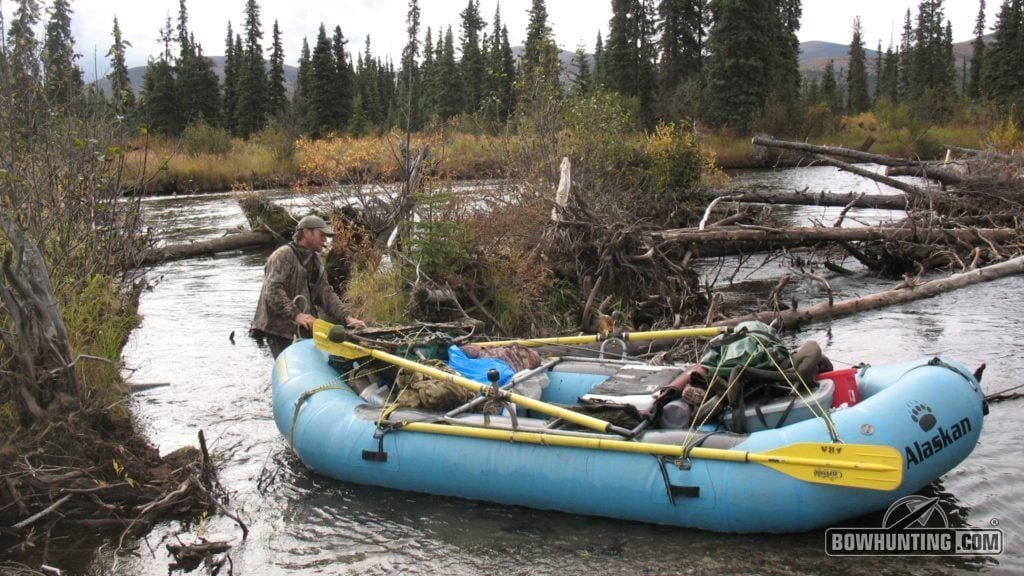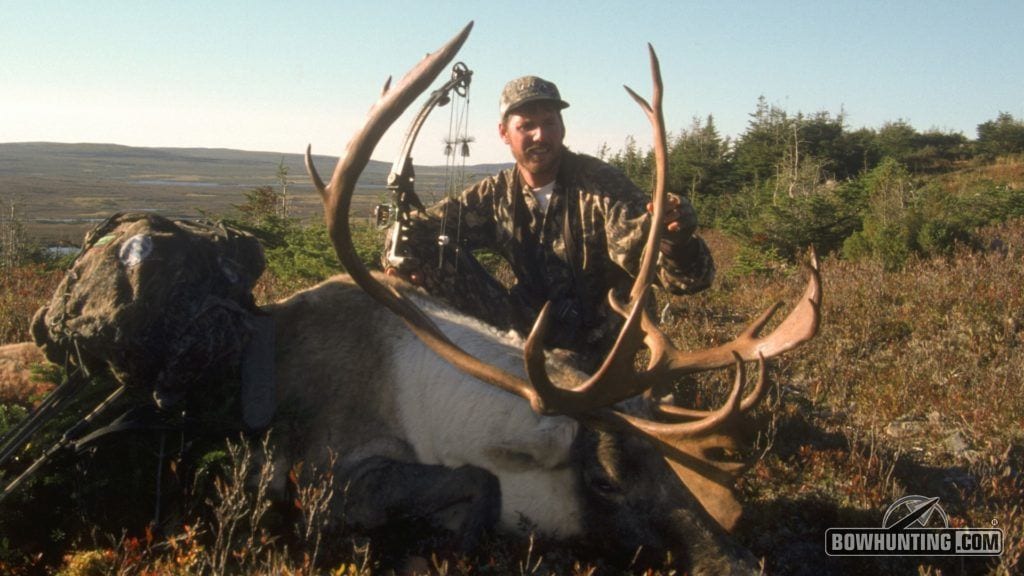Early in my bowhunting career I dreamed of pursuing caribou, fantasies no doubt spawned by a greedy consumption of Fred Bear lore. And why not? Caribou are arguably North America’s most gorgeous big game animal, perhaps the only animal able to trump the Rocky Mountain elk in outright beauty, sheer antler size and wild habitat fitting of such a majestic creature. And for many years a caribou bowhunt remained just that, a dream, more aptly a pipe dream; like a big house on the hill or an Italian sports car. But through persistence, dedication and what some might view as skewed priorities, I eventually did get to bowhunt caribou, first in Quebec, Canada, then woodlands in Newfoundland, and eventually on the wild tundra of Alaska.
I have since bowhunted caribou 10 times, twice in Quebec, once in Labrador, four times in Newfoundland and three forays to The Last Frontier. While every one of those adventures holds a special place in my heart, each providing a unique perspective of our fascinating world and the wild places bowhunters hold most dear, it was those trips to Alaska I cherish most of all—even that trip that didn’t work out so well. This has to do with one thing and one thing only; freedom. Alaska is the only place left in North America where a United States citizen can hunt caribou on their own, without being forced, by law, to hire a guide. Now I have nothing against guides and outfitters, as many have remained lasting friends and many more have provided lasting memories and quality experiences.

Of all the places the author has punched tags, he admits that a DIY Alaska caribou hunt is about as good as it gets.
A Desire to Do It On Your Own
But deep down I’m a fiercely independent fellow who likes to do things on his own. The sense of accomplishment that comes from braving Alaska wilderness without a safety net, successfully stalking a truly-wild caribou, butchering and schlepping your own meat, cooking your own meals and pitching your own camps cannot be overstated. And it can happen for you. My two biggest caribou to date, 403- and 398 7/8-inch booners, with recurve and compound, respectively, came on DIY hunts. Are you ready for a do-it-yourself caribou bowhunt? Here’s how to make it happen.
Where to go to for a DIY Caribou Bowhunt
Unfortunately, the massive Mulchatna herd 2 ½ air hours outside Anchorage crashed more than two decades ago and has really never recovered. But Alaska is a huge state and that leaves many options, simply none as affordable as those heralded Mulchatna herds of the 1990s into the earliest portions of the 2000s—with one exception. That exception lays on the so-called Haul Road or Alaska Highway between Anchorage and Fairbanks. A long section of this “highway,” sometimes passable, sometimes not, parallels the Alaska Pipeline and is designated bowhunting only. This allows flying into either city and renting a truck or SUV—or driving up from the Lower 48 in your own vehicle—and hunting relatively cheaply. This involves camping along the highway and venturing out each day, perhaps even backpacking and spike camping in outlaying areas after carefully studying maps. The key is to remain mobile until you get into widely-ranging ‘bou. I have several friends who have made successful trips on the Haul Road, so it is certainly an option worth looking into.

Flying around in Alaska won’t be cheap, but it’s pretty much the standard method of travel when hunting away from the crowds.
How to Travel for Your Caribou Bowhunt
The other, and more expensive, option involves a drop-camp via float plane. This has a few disadvantages, and many more advantages. Cons include the cost, obviously, packages available for around $2,500 per person, including mid-hunt check-in flights in case meat needs to be flown out, or you can simply pay by the hour at something to the tune of $450 per. The other major stumbling block is finding a reputable outfit that strives to place you in productive ground and not just take your money and park you somewhere where caribou haven’t been seen in weeks.
Pros includes increased mobility, which means when you do hire a quality carrier they will put you down where the latest intel tells them caribou are present or migrations are headed in that direction. The best outfits may even offer relocation in the middle of your hunt, included in a package cost, should caribou move on or fail to show. This option can turn a blank hunt into a winner. Many of these businesses offer equipment rental for gear such as tents and cookware. There is also sometimes the option for a river float, dropped at the head of a major drainage with rubber raft and supplies, picked up well downstream at an appointed date. These are worthwhile forays, as they allow you to cover ground and get into areas float planes normally can’t land.

When the terrain gets tight, and transportation by plane is not an option, a raft may be your best bet for accessing caribou.
Doing Your Homework
Now understand, the bush carrier, just like an outfitter, should be researched and vetted carefully before committing a deposit. Interview several perspective carriers in various areas, determining how much experience they have, typical success rates, whether their territory is bowhunting friendly, policies on gear limitations (some carriers charge by the pound for freight), extra charges for meat hauling or if you will be able to move in the middle of your hunt as needed. Always ask for references, preferably recent clients, and always a mix of successful and unsuccessful clients, and make follow-up calls with these folks. You might ask why unsuccessful. This is because the man who has collected his prize is often willing to overlook problems, while the man who didn’t get his caribou, but had a good time, says things ran smoothly and he would happily do business with the outfit again means you likely have a winner.
Some prime fly-out destinations include the Alaska Peninsula out of King Salmon, the Fairbanks area (where Fred Bear, Glenn St. Charles and company once hunted) and Kotzebue region—though Alaska is a big place and research may turn up other hotspots. Contact regional wildlife biologists, for instance, inquiring about the current status of area caribou herds and likely jump-off points. These people can be tough to run down at times, but can provide invaluable information.
Understand this isn’t something you just jump into. If you’re reading this now—May 2016—and have a burning desire to go, plans begin today for a trip conducted in August-October of 2017. The first thing you must do is talk one or two good friends into making the trip with you, as in the Alaska wilds nothing is more important than a solid hunting partner. Choose this/these person/persons with great care. Alaska is hugely challenging, often wet, windy, sometimes cold and bug infested, and you’ll be staying in a confined tent for 10 days minimum (Alaska success depends on time, so consider 10 days minimum, 14 days better). This is no place for chronic whiners, prima donnas or laziness. You never really know a guy until you’ve spent a week with them in the wilderness, and Alaska can bring out the worst in anyone. I have come away from prolonged Alaska ventures loathing a person I considered a friend beforehand.

Don’t think that a DIY hunt is a cheap hunt. It will take money, time, blood, sweat, and tears. But the rewards are priceless.
Hunting partners also make it easier to assemble all required gear. Maybe you have the best tent, a friend better cookware and lantern, and so on. This can also make the overall trip cheaper for all involved, splitting the cost of certain items and services. We were once able to take what we needed for two-week ventures on the commercial flight up, buying supplies such as Coleman fuel and groceries on arrival, but baggage allowances being what they are today it has become more cost effective to ship everything to a hotel or bush carrier well ahead of time—UPS generally and heavily insured.
Other Costs for a DIY Caribou Bowhunt
Other costs include an Alaska hunting license for $85, caribou tags at $350 each (some areas allowing tagging more than one caribou) and $50 fishing license—a worthwhile investment, as salmon, char and trout are often available and make a nice addition to dehydrated fare. Other extraneous expenses include hotel stay on arrival in Alaska and sometimes prior to departure (it’s nice to have a shower before climbing into a crowded commercial aircraft). You’re also looking at some restaurant meals, supplies and groceries at Alaska markup. Remember, everything must be transported into Alaska, so depending on where you begin expect sticker shock while purchasing even simple staples such as bread and beer (Anchorage has become cheaper than it once was, while remote outposts always include higher price tags). Don’t forget that gift for your wife, an Alaskan sweatshirt at the very least; at $78 Alaskan. When it comes to commercial air travel, watch for deals, book early and look into cheaper options such as dreaded red-eye flights. All in, each of my Alaskan forays have set me back about $3,500—or a third of the price of a fully-guided hunt.
If you have never bowhunted caribou you owe it to yourself to experience just one hunt—or several, as hitting the migration just right can require repeat visits. DIY doesn’t necessarily translate into cheap, but with the costs of guided hunts escalating every year, the Alaskan adventure is the only option left for working stiffs like us chasing our dreams. Make it happen this year!

 By
By 



